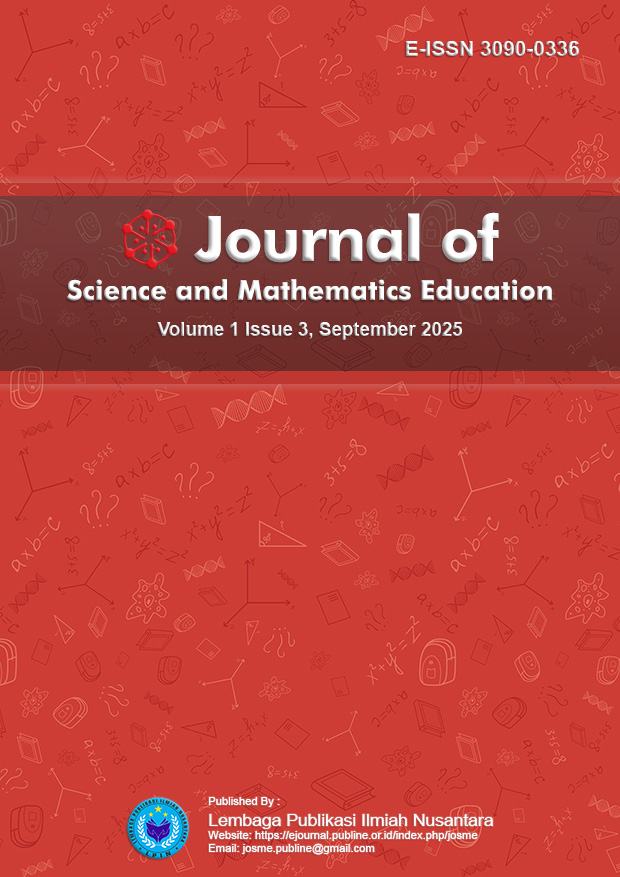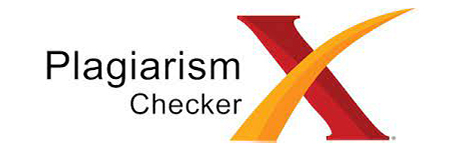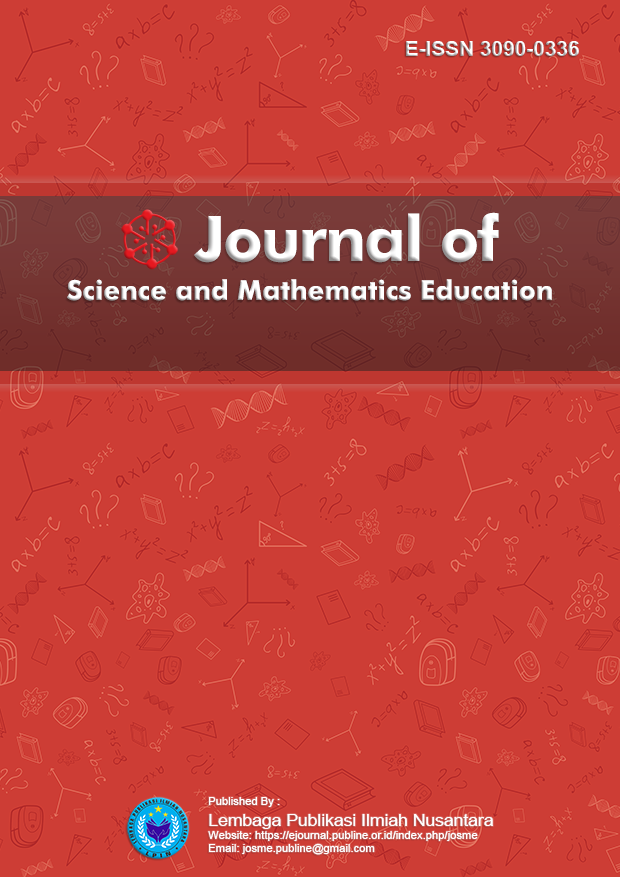Exploring Students’ Critical Thinking through Flipped Classroom Approach in Chemistry Learning at Penang Straits International School
DOI:
https://doi.org/10.70716/josme.v1i3.240Keywords:
Critical Thinking, Flipped Classroom, Chemistry Learning, Active Learning, Student EngagementAbstract
The cultivation of critical thinking skills has become a fundamental objective in 21st-century education, particularly in science subjects such as chemistry. This study aims to explore the effectiveness of the flipped classroom approach in fostering students’ critical thinking during chemistry learning at Penang Straits International School. Utilizing a qualitative descriptive research design, the study involved 30 Year 10 students enrolled in a chemistry course. Data were collected through classroom observations, student interviews, and performance assessments, focusing on students’ ability to analyze, evaluate, and synthesize information. The flipped classroom model, which inverts traditional teaching by delivering instructional content online outside of class and engaging students in interactive activities during classroom sessions, was implemented over a six-week period. The findings revealed that students exhibited significant improvement in critical thinking indicators, especially in problem identification, argument construction, and logical reasoning. Students also reported increased motivation and deeper conceptual understanding due to the active learning environment facilitated by the flipped approach. Teachers observed that students were more prepared and willing to engage in higher-order thinking tasks. This study concludes that the flipped classroom approach is a viable and effective pedagogical strategy for enhancing critical thinking in chemistry learning. The results suggest that integrating technology with active learning frameworks can transform traditional classrooms into dynamic learning environments that promote cognitive development.
Downloads
References
Borja, C. A., & Panoy, J. F. (2024). Interactive and Indirect Instruction in Developing Critical Thinking Skills of Grade 10 in a Flipped Science Classroom. EDUCATUM Journal of Science, Mathematics and Technology, 11(1), 23–35. https://doi.org/10.37134/ejsmt.vol11.1.4.2024eJournal UPSI
Dos Santos, R. P. (2023). Enhancing Chemistry Learning with ChatGPT and Bing Chat as Agents to Think With: A Comparative Case Study. arXiv preprint. https://arxiv.org/abs/2305.11890arXiv
Fadli, M. R., Rochmat, S., Sudrajat, A., Aman, A., Rohman, A., & Kuswono, K. (2024). Flipped classroom in history learning to improve students’ critical thinking. International Journal of Evaluation and Research in Education (IJERE), 11(3), 22785. http://doi.org/10.11591/ijere.v11i3.22785IJERE
Luciana, O., Rahayu, W. A., Normansyah, N., Suyahman, S., Rusmawan, R., & Manahor, A. (2024). The effectiveness of flipped classroom based blended learning on students' critical thinking skills. Psychology, Evaluation, and Technology in Educational Research, 6(2). https://doi.org/10.33292/petier.v6i2.199petier.org
Mustadi, A., Ghufron, A., & Fakhrudin, A. (2024). Promoting students’ critical thinking and creativity through TPACK based flipped classroom learning model in higher education. Edelweiss Applied Science and Technology, 8(5), 1249–1259. https://doi.org/10.55214/25768484.v8i5.1828Learning Gate
Putro, B. L., Zulkarnain, I., Waslaluddin, W., Putra, R. R. J., & Rahman, E. F. (2024). Flipped Classroom Model to Improve Students’ Critical Thinking Skills. In Proceedings of the 9th Mathematics, Science, and Computer Science Education International Seminar (MSCEIS 2023) (pp. 227–242). Atlantis Press. https://doi.org/10.2991/978-2-38476-283-5_23Atlantis Press
Yu, L., Li, Y., Lan, Y., & Zheng, H. (2023). Impacts of the flipped classroom on student performance and problem solving skills in secondary school chemistry courses. Chemistry Education Research and Practice, 24, 1025–1034. https://doi.org/10.1039/D2RP00339Bpubs.rsc.org+1pubs.rsc.org+1
Bergmann, J., & Sams, A. (2012). Flip your classroom: Reach every student in every class every day. International Society for Technology in Education.
Chen, Y., Wang, Y., Kinshuk, & Chen, N. S. (2014). Is FLIP enough? Or should we use the FLIPPED model instead? Computers & Education, 79, 16–27. https://doi.org/10.1016/j.compedu.2014.07.004
Jensen, J. L., Kummer, T. A., & Godoy, P. D. d. M. (2015). Improvements from a flipped classroom may simply be the fruits of active learning. CBE—Life Sciences Education, 14(1), ar5. https://doi.org/10.1187/cbe.14-08-0129
Lo, C. K., & Hew, K. F. (2017). A critical review of flipped classroom challenges in K-12 education: Possible solutions and recommendations for future research. Research and Practice in Technology Enhanced Learning, 12(1), 1–22.
Seery, M. K. (2015). Flipped learning in higher education chemistry: Emerging trends and potential directions. Chemistry Education Research and Practice, 16(4), 758–768.
Zainuddin, Z., & Halili, S. H. (2016). Flipped classroom research and trends from different fields of study. International Review of Research in Open and Distributed Learning, 17(3), 313–340. https://doi.org/10.19173/irrodl.v17i3.2274
O’Flaherty, J., & Phillips, C. (2015). The use of flipped classrooms in higher education: A scoping review. The Internet and Higher Education, 25, 85–95. https://doi.org/10.1016/j.iheduc.2015.02.002
Thai, N. T. T., De Wever, B., & Valcke, M. (2017). The impact of a flipped classroom design on learning performance in higher education: Looking for the best "blend" of lectures and guiding questions with feedback. Computers & Education, 107, 113–126.
Styers, M. L., Van Zandt, P. A., & Hayden, K. L. (2018). Active learning in flipped life science courses promotes critical thinking. CBE—Life Sciences Education, 17(3), ar39.
Karami, M., & Rezaei, A. (2021). The impact of flipped classroom instruction on EFL learners’ critical thinking and writing performance. Thinking Skills and Creativity, 41, 100857.
Astuti, R. A., & Fitria, N. (2023). Efektivitas model flipped classroom terhadap hasil belajar dan partisipasi siswa. Jurnal Inovasi Pembelajaran, 7(2), 98–106.
Ramadhani, R., Nurkhin, A., & Zaini, H. (2022). Penerapan pembelajaran flipped classroom dalam meningkatkan motivasi dan literasi sains siswa. Jurnal Ilmiah Pendidikan Fisika Al-Biruni, 11(1), 1–12.
Salamah, U., & Wulandari, E. (2021). Model flipped classroom untuk meningkatkan keterampilan berpikir kritis siswa sekolah menengah. Jurnal Edukasi Kimia, 13(2), 55–62.
Harahap, F., Nasution, N. E. A., & Manurung, B. (2020). The effect of blended learning on students’ critical thinking skills in physics. Journal of Education and Practice, 11(12), 21–29.
Rohendi, D., & Septian, S. (2020). Effect of flipped classroom model integrated with STEM on students' creative thinking skills. Journal of Technology and Science Education, 10(3), 365–375.
Downloads
Published
How to Cite
Issue
Section
License
Copyright (c) 2025 Abdul Hamid, Ashror Rahmad

This work is licensed under a Creative Commons Attribution-ShareAlike 4.0 International License.











